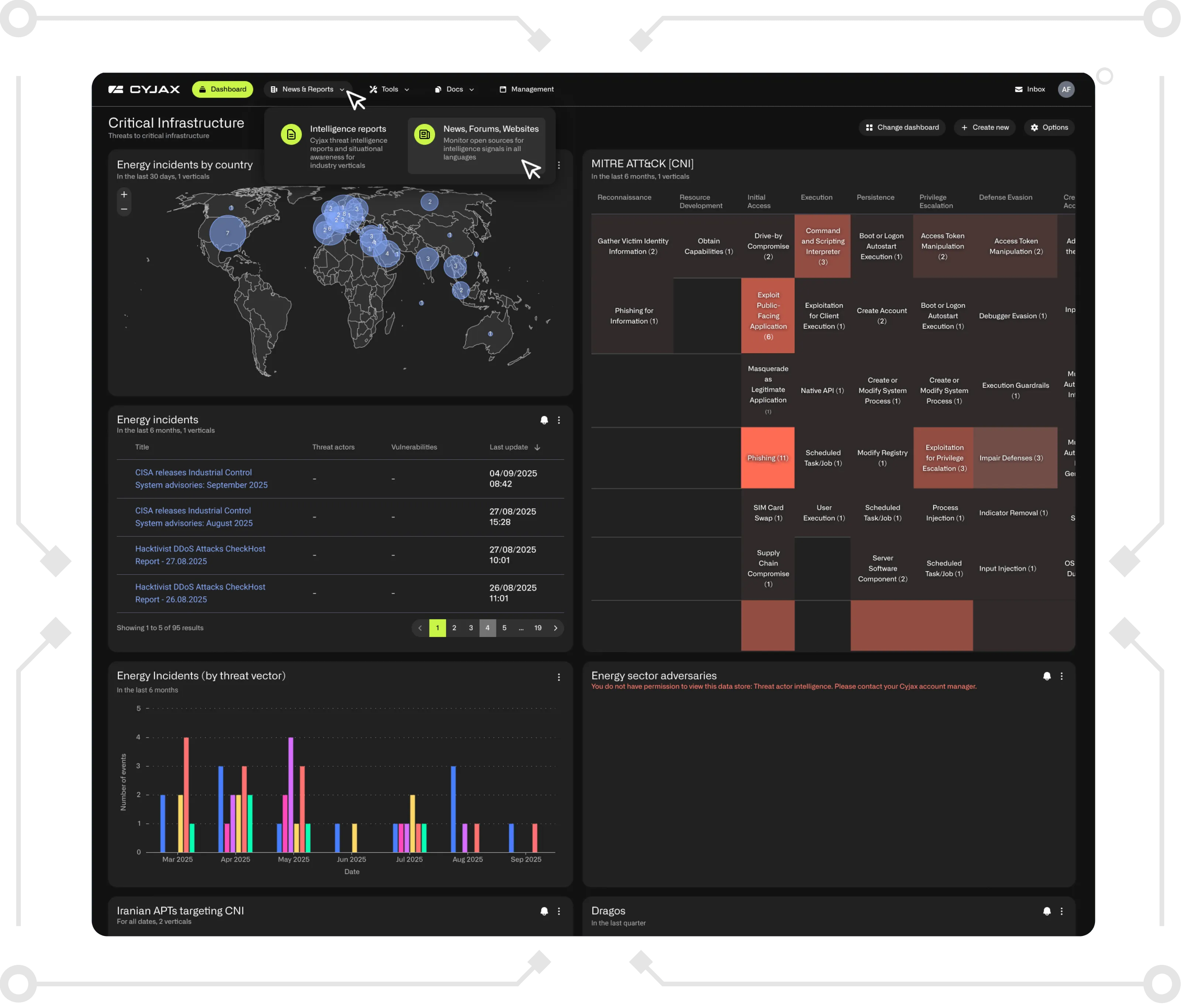Protecting Finance in 2025: The Cyber Threats You Can’t Ignore
Discover the top cyber risks in the financial sector for 2025, from ransomware to AI-driven fraud, and how CYJAX helps detect scams early.

Introduction
In an increasingly interconnected and digital world, cyber threats are no longer hypothetical, they’re everywhere, persistent, and costly. Businesses of all types are under attack: in the UK alone, 43% of businesses reported experiencing a cyber breach or attack in the last 12 months, with large firms hit most frequently. Globally, the average cost of a data breach has ballooned to over US$3.3 million, according to recent surveys.
In the financial sector, the stakes are especially high. Banks, insurers, FinTechs, and other financial institutions sit on troves of sensitive personal and financial data, handle large value transactions, and are often indispensable to the functioning of economies. The sector has seen massive fallout: in Europe, 96% of the top 100 financial institutions experienced at least one third-party breach in the past year, up from 78% in the previous period. Banking sector ransomware attacks are also proving especially expensive; each incident now costs on average about US$6.08 million, not counting downstream losses in reputation, compliance, or operational disruption.
Given these numbers, it’s critical for any financial organisation, not just large ones, to understand what kinds of threats are most likely, where the weak points lie, and how to prepare. In this blog, we’ll look at the top cyber-threats financial firms face in 2025.
Key Drivers & Risks in the Financial Sector
- Rising cost of Financial Crime Compliance
Ensuring compliance with anti-money-laundering, sanctions, fraud prevention etc., remains a major expense for banks and other financial institutions. For example:
• Globally, financial institutions are estimated to spend US$206.1 billion per year on financial crime compliance.
• In the EMEA region alone, that figure is around US$85 billion.
• In the UK, financial services firms are spending £38.3 billion annually on compliance and fraud screening, with compliance screening costs rising 12% in 2023.
- AI-driven decision making & trust in automated systems
More financial firms are using advanced analytics, machine learning, AI to make decisions in e.g. credit scoring, fraud detection, and risk modelling. But that raises new risks: bias, lack of transparency (“black boxes”), model drift, adversarial attacks. Building explainability, trust, governance around automated systems becomes critical. Not only big banks: fintechs, payment service providers, and even smaller players are using AI/ML tools. As they become more accessible (open source, third-party providers, cheaper compute), the attack surface increases. Risks include misuse of AI (e.g. generating phishing content), or reliance on poorly validated models.
- Operational resilience rules: DORA & UK deadline
With the Digital Operational Resilience Act (DORA) now in force (EU) and the UK’s operational resilience regulatory deadlines, firms are under pressure to finalise their strategies. They need clear, explainable positions on how they meet fundamental requirements such as ICT risk management, third-party risk, incident reporting, testing, etc.
• As of early 2025, a survey found 43% of UK financial services companies said they will miss the DORA deadline.
- Phishing / Social Engineering
Phishing remains one of the most common and persistent threat vectors. It is a variant of social engineering where attackers trick end-users into revealing login credentials, installing malware, or otherwise enabling internal compromise (lateral movement). In the financial sector, an attacker gaining valid credentials can lead directly to fraud, theft or exposure of sensitive data.
- Ransomware / Ransomware-as-a-Service (RaaS)
Ransomware continues to be a critical risk: malware that encrypts data or systems and demands payment; or threats to leak data. RaaS (ransomware offered as a service) means these attacks can be carried out even by less sophisticated adversaries.
• Although global ransomware payments dropped in 2024 (due to refusal to pay and law-enforcement action), the risk remains high.
• In UK, only 17% of enterprises attacked by ransomware paid the ransom in 2025, the lowest ever, as more are recovering via backups etc.
- Bank Drops (fraudulent bank accounts / misuse of credentials for holding stolen funds)
Cybercriminals frequently open fake or compromised bank accounts (“bank drops”) using stolen identities/credentials to move and launder money. These are used to obscure the origin or destination of funds, making detection and enforcement more difficult. Even if less “flashy” than ransomware, this is a serious ongoing threat in financial crime.
- Geopolitical tensions & instability
Operating in turbulent times, with sanctions regimes, cross-border risk, digital warfare, nation-state actors, and supply chain threats all influencing cyber risk. Geopolitical shifts can lead to new threat actors, increased regulation, countermeasures, and retaliatory attacks. Financial institutions are especially exposed, since they are both global and heavily regulated.
Conclusion
As we’ve seen, financial organisations in 2025 face a daunting landscape of cyber risk, from phishing, ransomware, and fraudulent “bank drop” schemes, to the added complexity of AI-driven systems, evolving regulation, and geopolitical pressures. The question is no longer if you’ll be targeted, but when and how prepared you’ll be to detect, respond, and recover.
That’s where CYJAX’s Payment Fraud Intelligence comes in. Rather than relying on generic threat feeds, CYJAX provides tailored, real-time intelligence that helps fraud teams detect emerging campaigns before they hit, whether through dark-web surveillance, BIN-specific probing detection, or monitoring cybercriminal chatter. Because fraud campaigns often begin in planning stages, early visibility gives you a critical head start.
Discover how CYJAX's Payment Fraud Intelligence can help your organisation detect emerging scams, stop fraudulent activity at the source, and safeguard every transaction.
Get Started with CYJAX CTI
Empower Your Team. Strengthen Your Defences.CYJAX gives you the intelligence advantage: clear, validated insights that let your team act fast without being buried in noise.

